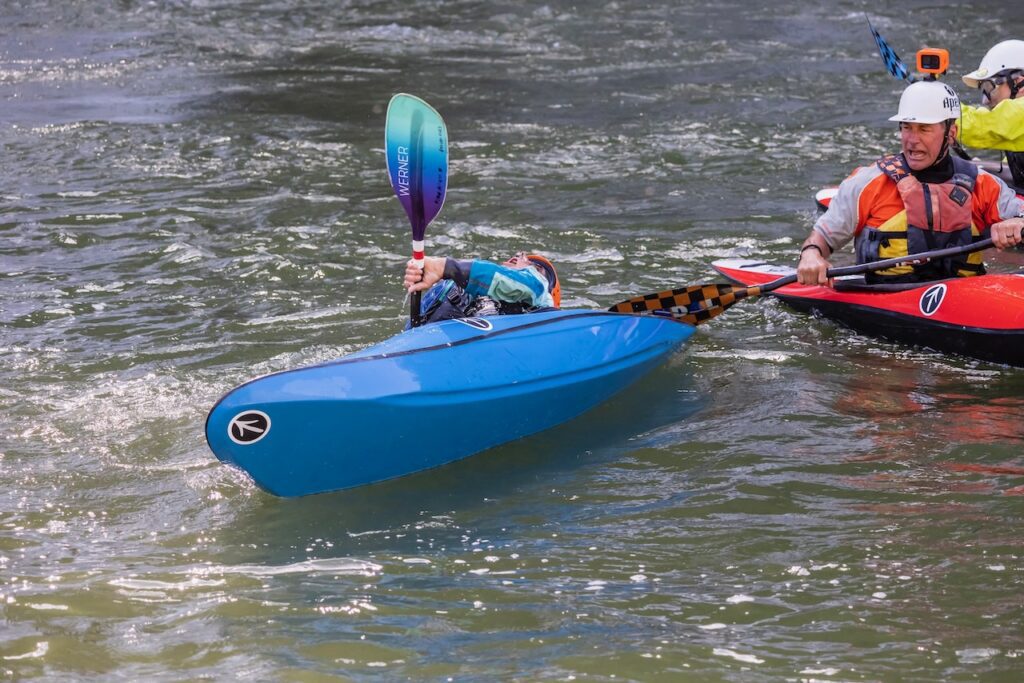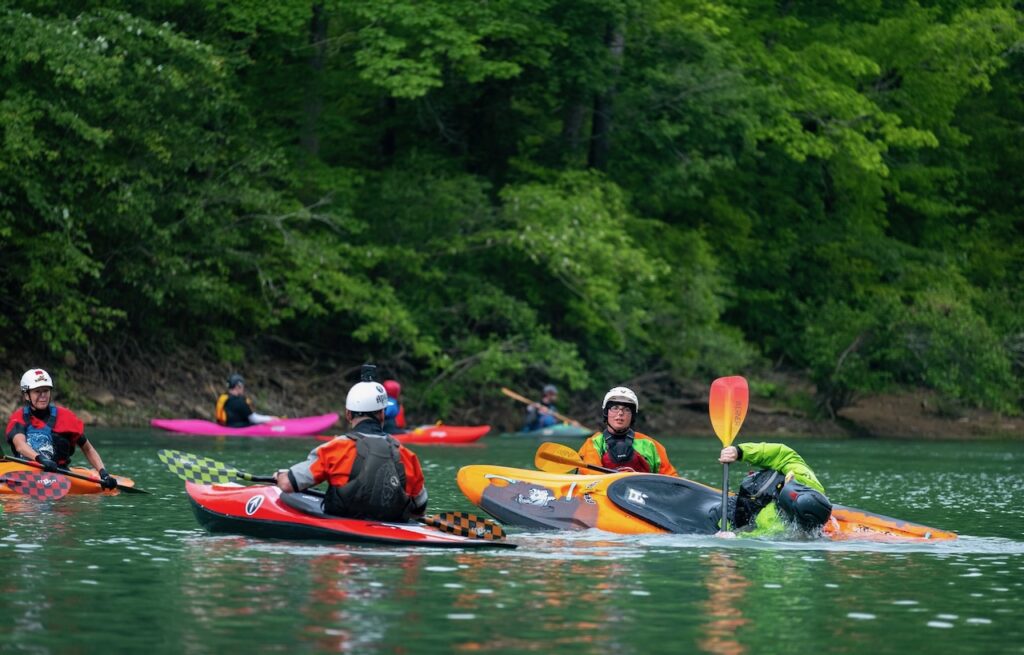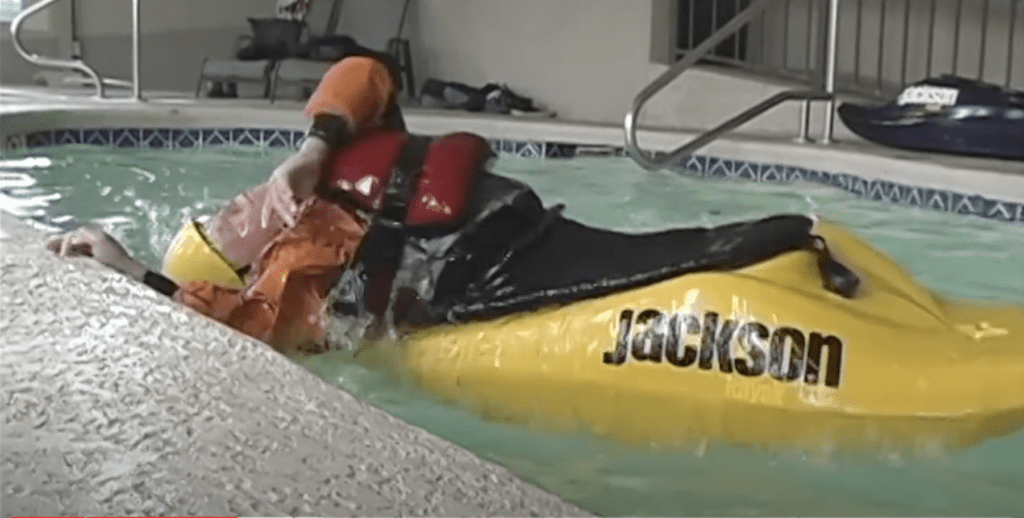The Kayak Roll Defined by EJ-
Definition of a Good Roll- “Rolling up the first time, every time.”
Definition of a Great Roll- “Rolling up the first time, every time, really fast.”

Don’t get sucked into things like the “C to C Roll” or other specific named versions of a skill and paddle movement that doesn’t require a paddle to begin with. This movement, now adopted by certification bodies world-wide is the biggest virus the sport has seen and is hurting new paddlers every day. Instead, learn what makes the roll work and how you can achieve that easily. If you have been trying to roll for years, you can blame the instructors for that one, not yourself. Once you can perform the kayak roll in flat water, I’ll show how to make it work in whitewater. We will also learn lots of fun drills to improve your roll in any situation, and you will even learn to hand roll. Bomb proofing your roll, simply making sure it works for you when you need it most, is always a fun part of the process.
Innovation leads to best practices.
“I made my biggest discoveries while standing on the shoulders of giants.” Leonardo Di Vinci
I will provide what I believe to be best practices for learning and applying the roll. I’ll happily provide the reasoning behind each one and can support it with physics, your body strengths and weaknesses, and more. Blindly following others “because everyone is doing it.” is not a good way to go in whitewater kayaking where bad information is rampant. Everyone thinking the world is flat doesn’t make it flat.
Also remember that somebody who is good at one thing, may not be good at others. Top slalom racers that swim on class 2 if they tip over. Creekboaters that run big waterfalls and can’t hand roll. Freestyle boaters that can’t run hard rivers, etc..
I have been fortunate enough to paddle with most of the best paddlers in the world across the whitewater spectrum- creeking, racing, slalom, freestyle, downriver, and expedition.
The blogs to come will bring best practices for rolling and bracing, and from a perspective that works across all disciplines. Let’s clear our minds and accept new information in, and see if we can’t improve your paddling experience immensely.
Our Strategy is going to be to focus on the big picture and then use tactics to achieve that goal. Big picture is to be able to roll anywhere, both sides, hand roll, and roll quickly without having to set up.
The difference between the professional and the amateur (soldier), is that the professional focuses on logistics, while the amateur focuses on tactics” Winston Churchill.
Phase 1- Hip Snap- Work=Force x Distance

Your head weighs 14 pounds on average and your body much more than that. How much energy it takes to roll up depends, to a large degree, how high you lift your head and body during the rolling process. Or, for the person learning, whether they get up at all or not, is dependent largely on how high they lift their head and body above the water.

The minimum distance you can lift your head and body during the roll and come up is where your head and body are laying on the back deck, and head arched towards the water. For simplicity, let’s say 1″ off the water and let’s say your head is small and only 12 pounds. If you roll up with your head only 1″ off the water before you are right side up, lifting your head to that spot was 1 foot pound of energy. Lifting it to a C to C position puts your head about 2′ above the water on average or 24-foot- pounds or 24 times as much energy. 24 times!! Let’s just stop there for a second. Physics tells us the answers we need. There a bunch of other reasons people will give for “not laying back on the roll”, but they don’t hold water if you want to roll successfully and easily. Can you roll without laying back? OF course you can! I do it all of the time, but I don’t miss those rolls and I am happy to use the extra energy. I know very well, how to roll up using minimum energy and can always use it when I need it, and come close to it a lot. You shouldn’t handicap yourself.
Here is a video that shares some of this intro information and will help you see it in action. By the time we get through everything, there will be about 7 blogs in order showing rolling and bracing broken down for you.

